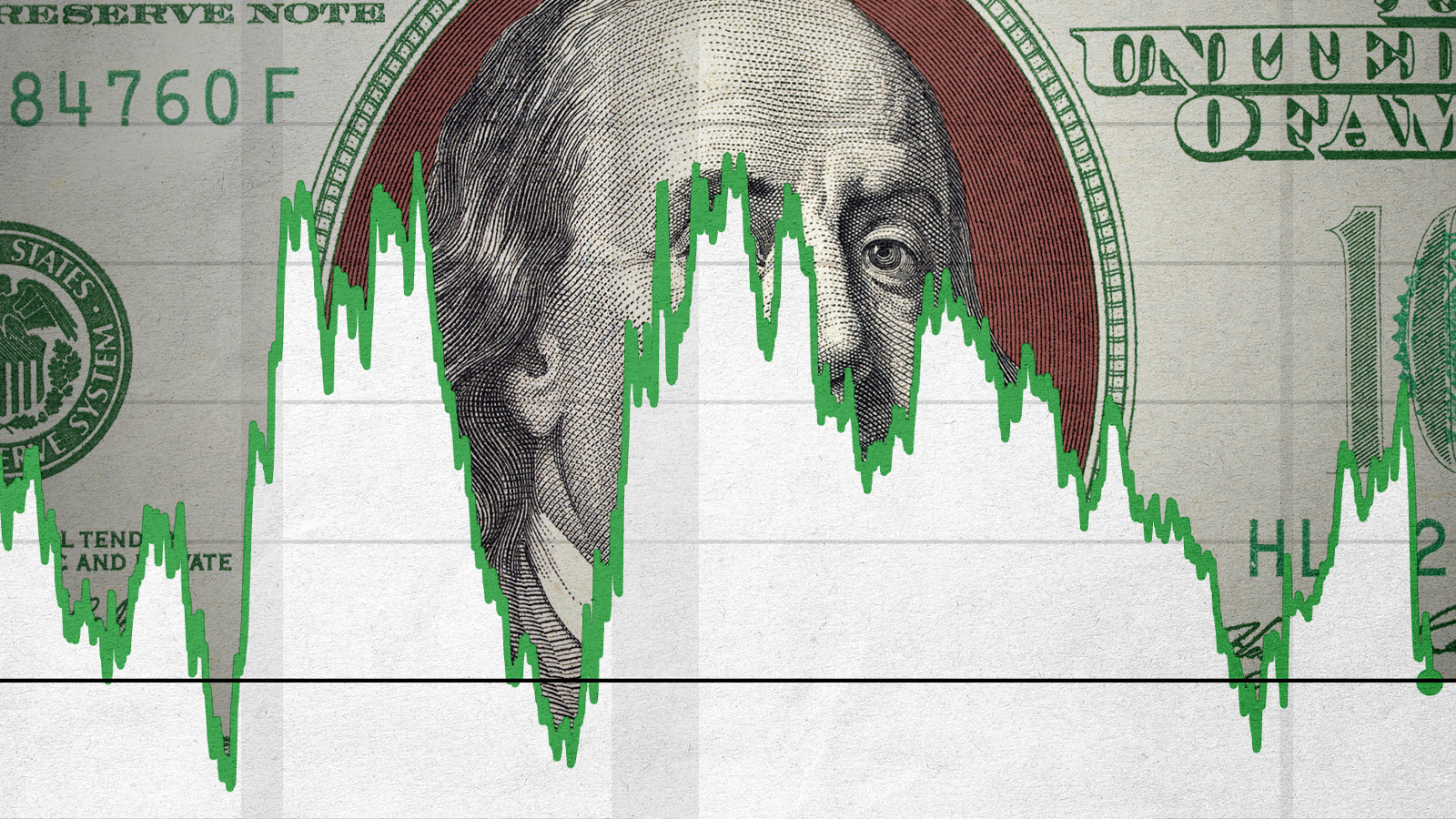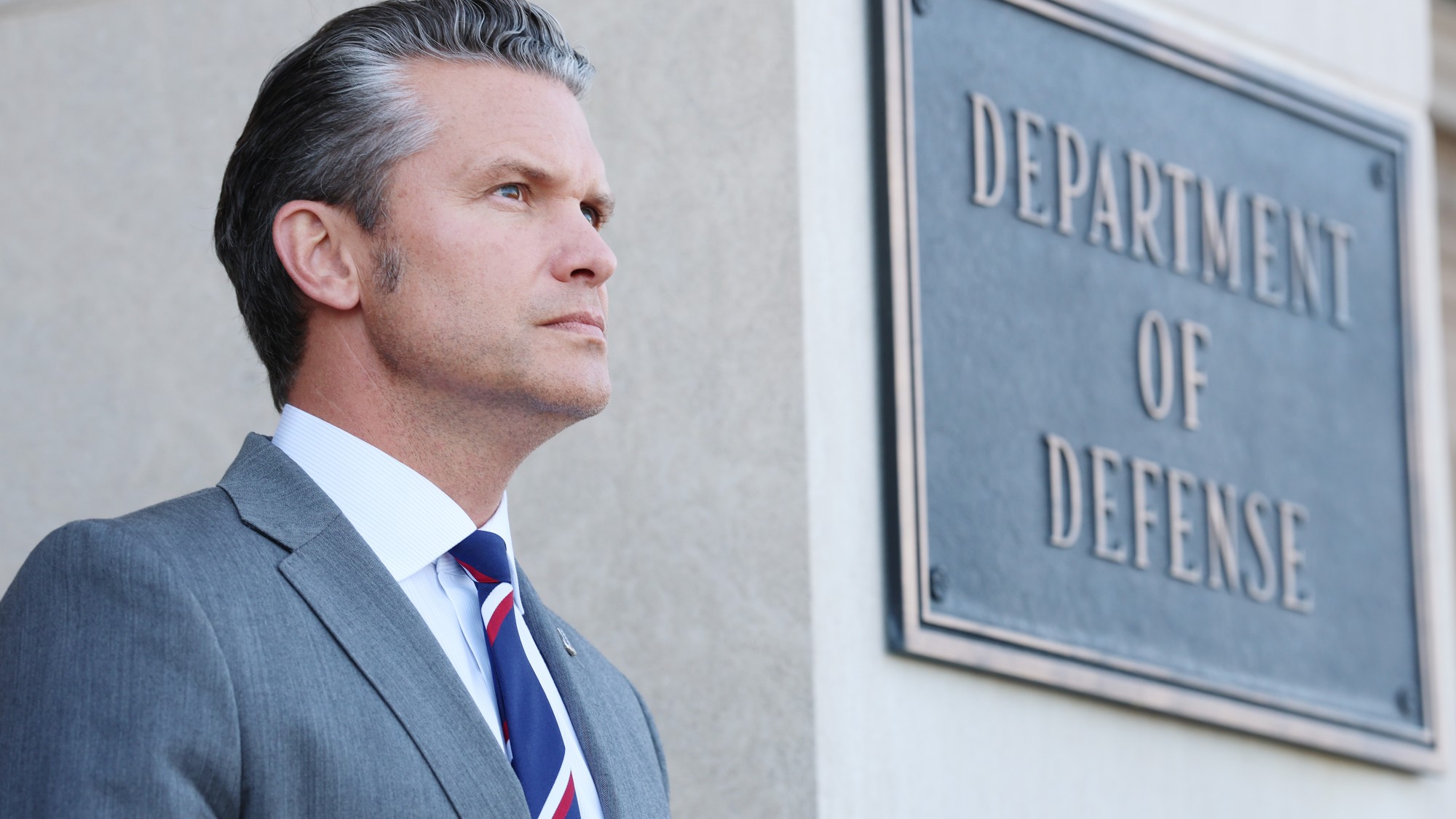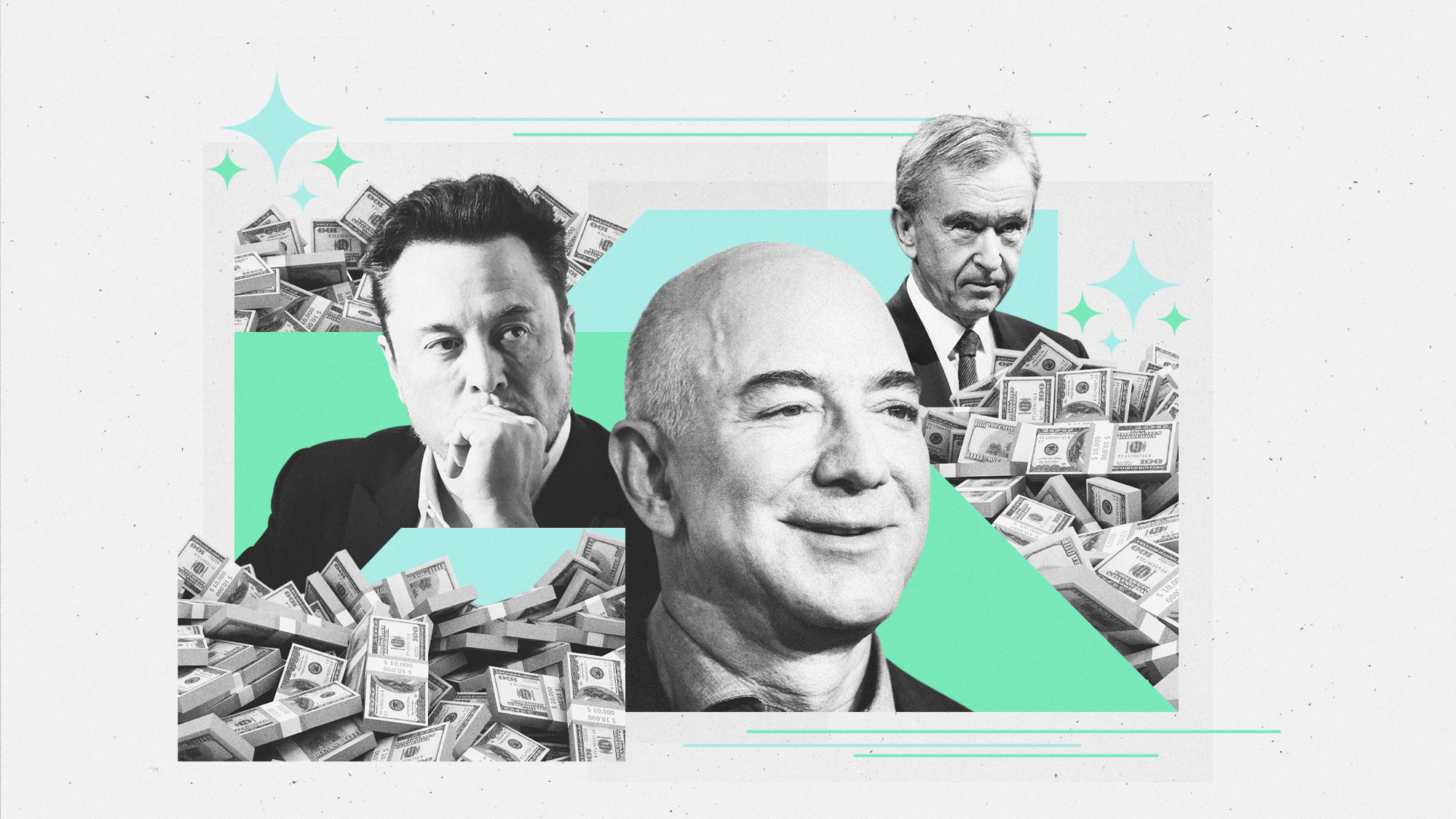What is the yield curve?
What this metric really signals, and where economists think our economy is headed.


Investors and analysts have, for months, warned of an impending economic downtown, and it's looking like the so-called "yield curve" is in agreement. Here's everything you need to know about the widely-followed recession indicator and what it means:
What is the yield curve?
A yield curve is an economic tool that can help you "understand bond markets, interest rates, and the health of the U.S. economy as a whole," Forbes writes. But generally speaking, when discussing the yield curve, most people are referring to that which tracks U.S. Treasury securities. Per The New York Times, the yield curve is "a way of comparing interest rates, also known as yields, on different maturities of government bonds, from a few months to 10 years or more."
When investors buy government bonds, thereby lending the government money, the Treasury "promises to return their principal investment after a set period of time — at maturity — and pay them a fixed rate of interest on the loan — a.k.a. the coupon," Forbes writes. Though the exact coupon doesn't change over time, the bond's yield — its return — does, taking into account "the constantly changing prices of Treasuries in the secondary resale market." Though higher yields might simply mean "bond investors are owed larger interest payments" (perhaps investors are lending money for a longer period of time), they may also signal "greater risk," Investopedia reports: "The riskier a borrower is, the more yield investors demand." Not to mention there are market factors like inflation to consider, the Times adds.
The Week
Escape your echo chamber. Get the facts behind the news, plus analysis from multiple perspectives.

Sign up for The Week's Free Newsletters
From our morning news briefing to a weekly Good News Newsletter, get the best of The Week delivered directly to your inbox.
From our morning news briefing to a weekly Good News Newsletter, get the best of The Week delivered directly to your inbox.
Because interest rates on government bonds with varying maturities can "behave quite differently," depending on risk perceptions and the overall economic picture at any given time, the yield curve affords investors a "snapshot" of those varying rates and maturities "on one chart," Forbes writes. They can then use that simple picture to think through their investment strategy and understand their risk. The shape of the yield curve also fluctuates given the state of the Treasury market and the economy overall, with each shape — "normal, steep, inverted, flat or humped" — suggesting "a different potential outlook," Forbes reports. Normal and steep yield curves, which slope upward and to the right, are indicative of a healthy and functioning economy.
What does the yield curve look like now?
Well, it's inverted … which isn't good a sign.
At times, the interest rates for bonds with shorter maturities will rise above those with longer-term maturities, "upending the usual situation in the bond market," the Times writes. This creates a "yield-curve inversion," in which the curve slopes down and to the right rather than up. With an inverted curve, investors are "effectively demanding more money to lend to the government over shorter periods of time," per the Times. In other words, they're pessimistic about economic growth, and often rush to buy more-secure long-term U.S. bonds, Forbes notes. That surge in demand causes the long-term yield to drop, but the short-term yield to rise.
Case in point — yields on two-year Treasuries have remained above those of 10-year Treasuries since July, the Times and Reuters report. And at times earlier this week, "another segment of the curve also inverted, with the three-month yield inching above the 10-year yield," the Times continues.
A free daily email with the biggest news stories of the day – and the best features from TheWeek.com
If you know anything about the current economic picture, you know recession alarm bells have been ringing for a while, as decades-high inflation continues to roil the economy and the Federal Reserve raises interest rates in hopes of stabilization. (Higher interest rates make it more expensive for consumers and companies to borrow money, thereby slowing things down). But if the Fed cools the market too much, well, investors fear the economy might just shrink instead. "There is an expectation that interest rates will reach a restrictive level, beyond what the economy can sustain long term, slowing the economy," Bank of America Interest Rate Strategist Mark Cabana told the Times. "It's a signal that we are likely heading for a recession."
Ok, so the yield curve is a signal. But is it definite?
No, it's not definite — but it has its merits.
An inverted yield curve has "accurately predicted the ten most recent recessions," according to Forbes. And Reuters notes that the U.S. curve has "inverted before each recession since 1955, with a recession following between six and 24 months." (Only once in that period was it wrong.) What's more, the two-year Treasury/10-year Treasury spread "inverted 28 times since 1900," Reuters continues, per Anu Gaggar, Global Investment Strategist for Commonwealth Financial Network, and "in 22 of these instances, a recession followed." Prior to 2022, the last time the 2/10 section of the curve inverted was in 2019, before the COVID-19-induced recession in the U.S.
Overall, however, it's important to remember that the yield curve is "an indicator, not a prediction," Forbes writes. It also doesn't cause economic strife itself — it just "represents how investors see the trajectory of the U.S. economy." To rely solely on the curve when it comes to forecasting a recession would be to ignore a whole section of the puzzle. You must consider the economy at large.
What about the economic report from Thursday?
The U.S. on Thursday reported a 2.6 percent annual rate of expansion in the third quarter, a welcome return to growth following two straight quarters of decline. And the better-than-expected piece of news also notably arrives just before the consequential midterm elections, "in which the economy's health has emerged as a paramount issue," writes The Associated Press. That said, however, the latest report saw a decline in consumer spending, as well as the "steepest contraction in the housing sector since the first months of the pandemic," the Times reports. "Ignore the headline number — growth rates are slowing," Michael Gapen, chief U.S. economist for Bank of America, told the Times. "It wouldn't take much further slowing from here to tip the economy into a recession."
By one definition, the U.S is already in a recession, having experienced "two straight quarters of shrinking GDP at the start of the year," the Times continues. But most analysts and researchers, some of which are responsible for handing down an official recession determination, aren't yet convinced once has begun — especially given Thursday's report. That said, the third-quarter growth in exports (which contributed in large part to the economy's expansion) will likely be "difficult to sustain as the global economy weakens" and the dollar grows stronger, AP notes.
For his part, President Biden celebrated the news: "[T]oday we got further evidence that our economic recovery is continuing to power forward." But Rubella Farooqi, an economist with High Frequency Economics, might not necessarily agree: "Looking ahead, risks are to the downside, to consumption in particular, as households continue to face challenges from high prices and likely slower job growth going forward," he wrote in a statement.
All that said, the Thursday numbers did indicate a bit of a slowdown in inflation, which might help convince the Fed it can soon back off the rate hikes, AP adds.
Brigid Kennedy worked at The Week from 2021 to 2023 as a staff writer, junior editor and then story editor, with an interest in U.S. politics, the economy and the music industry.
-
 How the War Department became the Department of Defense – and back again
How the War Department became the Department of Defense – and back againIn Depth In 1947 President Harry Truman restructured the US military establishment, breaking with naming tradition
-
 Codeword: December 8, 2025
Codeword: December 8, 2025The daily codeword puzzle from The Week
-
 Sudoku medium: December 8, 2025
Sudoku medium: December 8, 2025The daily medium sudoku puzzle from The Week
-
 The rise of the world's first trillionaire
The rise of the world's first trillionairein depth When will it happen, and who will it be?
-
 The surge in child labor
The surge in child laborThe Explainer A growing number of companies in the U.S. are illegally hiring children — and putting them to work in dangerous jobs.
-
 Your new car may be a 'privacy nightmare on wheels'
Your new car may be a 'privacy nightmare on wheels'Speed Read New cars come with helpful bells and whistles, but also cameras, microphones and sensors that are reporting on everything you do
-
 Empty office buildings are blank slates to improve cities
Empty office buildings are blank slates to improve citiesSpeed Read The pandemic kept people home and now city buildings are vacant
-
 Why auto workers are on the brink of striking
Why auto workers are on the brink of strikingSpeed Read As the industry transitions to EVs, union workers ask for a pay raise and a shorter workweek
-
 American wealth disparity by the numbers
American wealth disparity by the numbersThe Explainer The gap between rich and poor continues to widen in the United States
-
 Cheap cars get run off the road
Cheap cars get run off the roadSpeed Read Why automakers are shedding small cars for SUVs, and what that means for buyers
-
 Vietnamese EV maker VinFast wows with staggering Nasdaq debut
Vietnamese EV maker VinFast wows with staggering Nasdaq debutSpeed Read Can the company keep up the pace, or is it running out of gas?
